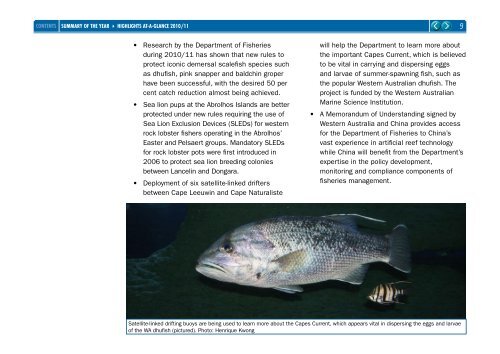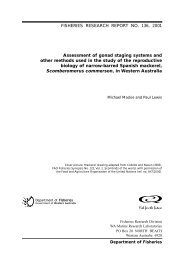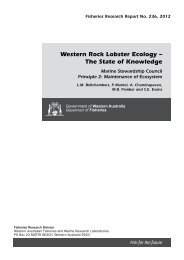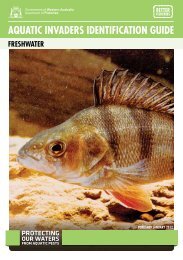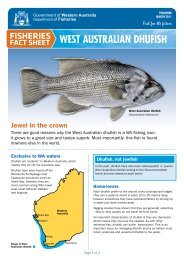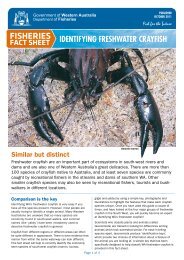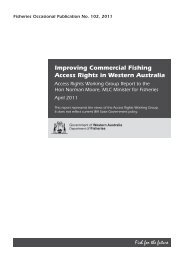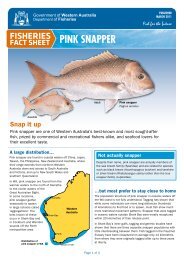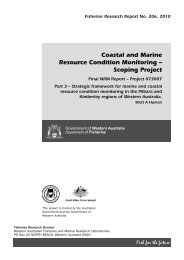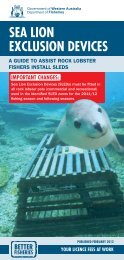DEPARTMENT OF FISHERIES ANNUAL REPORT TO THE ...
DEPARTMENT OF FISHERIES ANNUAL REPORT TO THE ...
DEPARTMENT OF FISHERIES ANNUAL REPORT TO THE ...
Create successful ePaper yourself
Turn your PDF publications into a flip-book with our unique Google optimized e-Paper software.
SUMMARy <strong>OF</strong> <strong>THE</strong> yEAR � HIgHLIgHTS AT-A-gLANCE 2010/11<br />
• Research by the Department of Fisheries<br />
during 2010/11 has shown that new rules to<br />
protect iconic demersal scalefish species such<br />
as dhufish, pink snapper and baldchin groper<br />
have been successful, with the desired 50 per<br />
cent catch reduction almost being achieved.<br />
• Sea lion pups at the Abrolhos Islands are better<br />
protected under new rules requiring the use of<br />
Sea Lion Exclusion Devices (SLEDs) for western<br />
rock lobster fishers operating in the Abrolhos’<br />
Easter and Pelsaert groups. Mandatory SLEDs<br />
for rock lobster pots were first introduced in<br />
2006 to protect sea lion breeding colonies<br />
between Lancelin and Dongara.<br />
• Deployment of six satellite-linked drifters<br />
between Cape Leeuwin and Cape Naturaliste<br />
will help the Department to learn more about<br />
the important Capes Current, which is believed<br />
to be vital in carrying and dispersing eggs<br />
and larvae of summer-spawning fish, such as<br />
the popular Western Australian dhufish. The<br />
project is funded by the Western Australian<br />
Marine Science Institution.<br />
• A Memorandum of Understanding signed by<br />
Western Australia and China provides access<br />
for the Department of Fisheries to China’s<br />
vast experience in artificial reef technology<br />
while China will benefit from the Department’s<br />
expertise in the policy development,<br />
monitoring and compliance components of<br />
fisheries management.<br />
Satellite-linked drifting buoys are being used to learn more about the Capes Current, which appears vital in dispersing the eggs and larvae<br />
of the WA dhufish (pictured). Photo: Henrique Kwong<br />
9


